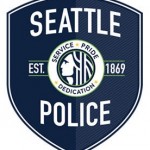 City Councilmember Tim Burgess made this report on a briefing SPD gave to the Council January 27th. I put in bold one paragraph and our North Precinct line items in the charts:
City Councilmember Tim Burgess made this report on a briefing SPD gave to the Council January 27th. I put in bold one paragraph and our North Precinct line items in the charts:
The City Council’s public safety committee was briefed yesterday on police department response times to high priority 911 calls. It was refreshingly transparent and candid.
The briefing was prompted by an article in The Seattle Times on January 2 that contrasted SPD’s stated goal of responding within seven minutes to the highest priority 911 calls against the reality the Times analysis of response times revealed. (911 calls labeled Priority 1 involve incidents creating risk to life or serious injury, crimes in progress, officer or firefighter safety, and other emergency events.)
I remember attending many similar briefings over the past eight years and hearing police leadership repeat over and over again that they met the seven minute standard consistently and city-wide. Yesterday, we heard a very different report.
Unfortunately, the former leadership in SPD used a calculation methodology that arbitrarily and artificially lowered response time figures.* While this method allowed them to claim they were meeting their goal, it did not match what Seattle residents expected or experienced. Chief Kathy O’Toole and her leadership team acknowledged yesterday that the Times article prompted them to look more closely at the calculations and provide a more accurate assessment. Bravo to Chief O’Toole and her team.
Before sharing the new numbers, it’s important to keep several factors in mind.
First, average response times do not necessarily reflect the quality of police work, nor does getting to the scene of an incident faster necessarily lead to more arrests or a reduction in crime. At best, response times are one factor to be considered—among many—when making decisions about officer deployment.
Second, how response times are calculated is very important. Seattle measures response times from the moment 911 call information is sent to a dispatcher to the moment an officer reports arriving at the scene of the incident. Not included in this calculation is the time it takes the 911 operator to receive the call, determine the nature of the incident, and enter the details into the 911 dispatch database, a period of time that could last seconds to a minute or more.
Average Response Times to Priority 1 911 Calls
Between 2010 and 2015, the citywide average response time to Priority 1 911 calls increased from approximately eight minutes to nearly nine and a half minutes. But, as the following table shows there are significant differences by police precinct. (You can view the police precinct maps here.)
| Precinct | 2010 | 2015 | % change |
| East | 6:21 | 7:17 | 15% |
| North | 9:07 | 11:32 | 27% |
| South | 8:28 | 8:36 | 2% |
| Southwest | 9:04 | 10:20 | 14% |
| West | 7:23 | 8:42 | 18% |
(Note: we have changed the numbers provided by SPD from decimals into minutes:seconds.)
911 Call Volumes
Police service demand as measured by 911 calls has increased 13% over the past five years. But, as the next table shows, Priority 1 911 calls have increased 52% in the same period of time, indicating a shift in our officers’ work load. Non-Priority 1 911 calls have risen only 7% in the past five years.
The sharp increase in Priority 1 calls shows that the nature of work for patrol officers is shifting, with more time being spent on more serious incidents. All other things being equal, this inevitably means that lower priority calls get slower response times.
| All 911 Calls | |||
| Precinct | 2010 | 2015 | % change |
| East | 35,349 | 40,456 | 14% |
| North | 67,781 | 75,629 | 12% |
| South | 40,432 | 39,078 | -3% |
| Southwest | 23,175 | 26,581 | 15% |
| West | 55,059 | 68,841 | 25% |
| Citywide | 221,796 | 250,585 | 13% |
| Priority 1 Calls | |||
| Precinct | 2010 | 2015 | % change |
| East | 4,524 | 7,163 | 58% |
| North | 8,070 | 12,993 | 61% |
| South | 5,225 | 7,275 | 39% |
| Southwest | 3,379 | 4,900 | 45% |
| West | 7,129 | 10,850 | 52% |
| Citywide | 28,327 | 43,181 | 52% |
| All Other Calls | |||
| Precinct | 2010 | 2015 | % change |
| East | 30,825 | 33,293 | 8% |
| North | 59,711 | 62,636 | 5% |
| South | 35,207 | 31,803 | -10% |
| Southwest | 19,796 | 21,681 | 10% |
| West | 47,930 | 57,991 | 21% |
| Citywide | 193,469 | 207,404 | 7% |


Leave a Reply